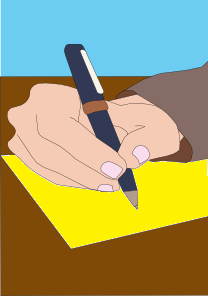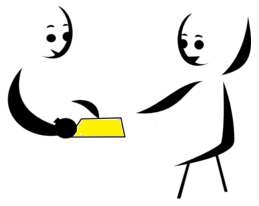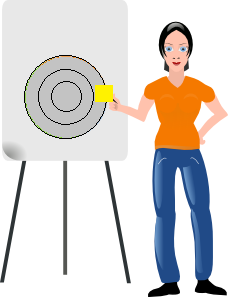(An Agile Retrospective)
This simple retro gets everyone up, talking, and interacting. Everyone takes a turn as “leader” of the conversation. This is a combination of two existing retro styles. (Links to the prior work are at the bottom of this article.)
Prerequisites
- Items needed: large post-its, whiteboard, markers
Steps
1. Introspective

Ask everyone to take three post-its and, on separate post-its, complete each of these statements:
- “I like …”
- What do you like about your team?
- Do you like that someone collaborated with or helped you?
- What do you like about the process we used?
- Anything else that happened that you liked!
- “I wish …“
- What do you want to improve about your team?
- What can we improve about our process?
- “What if …“
- What if the team or process could change?
- What if anything was possible?
The above bullets are just suggestions if people seem stuck. No need to constrain the team to them.
Encourage people to write down more than three thoughts if they want to share more ideas.
2. Exchange

Have everyone stand up, walk around, and exchange each post-it with a different person.
- This gets people active and talking to each other.
- Everyone should wind up having as many new post-its to read as they originally wrote.
- People should not wind-up with any of their own post-its!
3. Share Leadership
NOTE: You can have people continue to stand or have them sit at this point. (Gauge the energy level of the group.)
Every team member takes a turn at the white-board and does the following:

- Read one post-it to the group.
- Lead a discussion about it with the group.
- Some things that the “leader” might ask the group:
- Does anyone want to amplify this point?
- (Author can choose to speak up or not)
- What do we think about this?
- What actions can we take?
- How can we improve the situation?
- Does anyone want to amplify this point?
- Some things that the “leader” might ask the group:
- Ask the group where the post-it goes in the Soup Diagram. (I explain how the Soup Diagram works below.)*
- Repeat until all that team member’s post-its are discussed.
Collect impediments, risks, and action items as the discussion unfolds.
Remember, even though the team member is leading the discussion, you, as the facilitator, are there as a guide. Step in if the discussion needs some help.
The first time I do this with a team, I will ask for one of the post-its and go first to show how it works. It’s important to remind the group member leading the discussion that they are not deciding where it goes in the Soup Diagram but rather they are leading the group in deciding where it goes.
*Soup Diagram
The “Circles and Soup” retro comes from Diana Larsen. In it, items are placed in the appropriate circle based on whether the team has direct control (center circle), merely influences (next circle out), or has no control whatsoever (i.e. the “Soup”).

In my experience, it often it winds up that many things are under a team’s control.
This can really be eye-opening for teams. It shows that their success is much more under their own control than they think.
It’s okay if post-it’s cross over the border. Sometimes that’s the best representation of real life!
In Closing
This retro not only gets everyone thinking and interacting, it turns the leadership dynamic around. Each team member has to put on their “leadership hat” for a few minutes. They get a taste of servant leadership.
References
There are now many web pages referencing the two original retrospectives combined in this article. These two links will help you find more information:
Graphics and editing by Janet Pazzynski.
